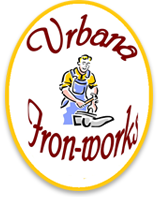Even Off The Estate: Gates in Washington DC
Gates are part and parcel of modern day architecture in our nation’s capitol. In fact, nearly every city in the world has at least one neighborhood where it’s commonplace to build decorative (or functional-but-beautiful) fences — and anywhere there’s a fence, there’s going to be a gate. In America, gates are most commonly associated with estates, where a valuable building is surrounded with ample land and protected by a wall. The estate gates in Washington DC are modeled off of the entrances used by these large properties even if they’re being used to protect and beautify a relatively small property.
Speaking of beautification — it’s the major purpose of gates in the modern era. At one time, a gate was considered primarily protective in nature, to keep solicitors and intruders out, but today that job is taken care of more by security cameras and private guards than it is by any sort of physical barrier. That said, the gate as a method of making your home beautiful is hard to match.
The gate is the first thing that anyone sees (except perhaps the wall it’s attached to), and so it makes the first impression on anyone approaching the home. You can use that to your advantage, choosing anything from the classic imposing wrought iron to ultra-modern stainless steel. (Washington DC tends toward the former, but there are plenty of examples of the latter as well, especially toward the Maryland side.) For those willing to put up with the maintenance costs, there’s little that says “old money” like a beautiful wooden estate gate — but that’s a little excessive for the vast majority of Americans.
Because there are so many options for estate gates, there’s never been a home that can’t be enhanced by the addition of a cleverly-designed one. No matter what your home looks like — from a Southwestern style stucco and adobe ranch to an ultra-modern plexiglass and stainless steel fortress to a literal castle, there’s a company out there that will design and create an estate gate that will make visitors stop and say “wow” — and isn’t that, in the end, really the point?

